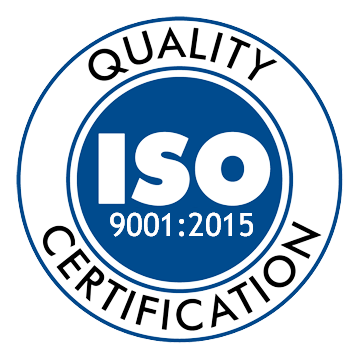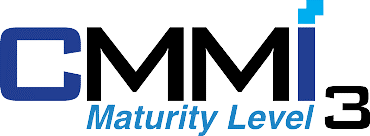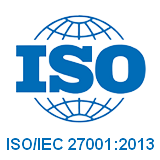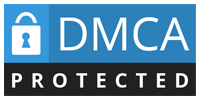ISO 9001 international standard on quality management system quality requirements, the organization must comply with 6 processes required to ensure effective continuous improvement in the operation.
So 6 mandatory process of ISO 9001 what is this? To help enterprises improve product quality, optimize workflow, increase the satisfaction of customers like? In this article Lac Viet Computing will depth analysis on each process to help businesses apply ISO 9001 a practical way the most effective.
1. Process document control ISO
In a business, document management, quality includes not only the workflow, but also the policies, operating instructions, form record check. If the business does not control the material tight, very easy to occur status:
- Employees use the document outdated, leading to the execution process, affect the quality of products/services.
- No system of version control, led to the document being edited does not control, causing confusion in the process of work.
- Difficult to access important information, loss of time affects the speed of processing work.
For example, a company manufacturing electronic components ever encountered problem when the version, check the tutorials quality is not synchronized updates. The result is a number of defective products remains be moved to the next stitch, which leads to product ratio is about 30% increase.
The steps made mandatory process of ISO 9001 this:
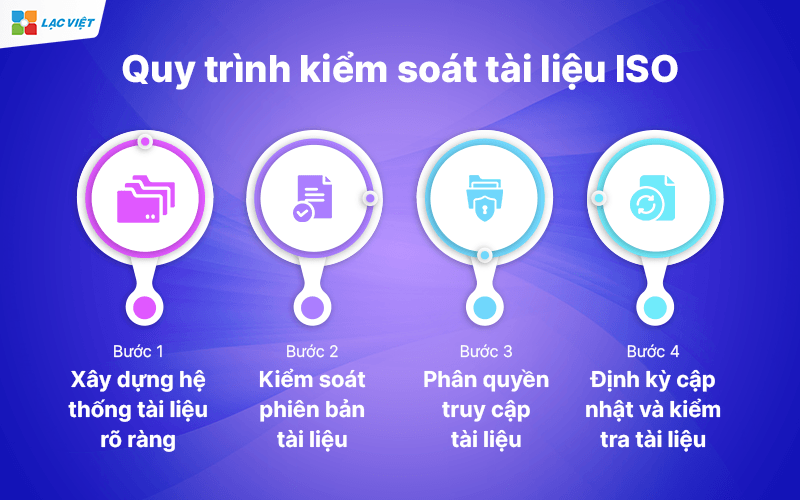
- Build system documentation clear: Enterprises need to determine the type of your important documents, including policies, procedures, work instructions, forms control. All documents must have the code number, release date, person responsible for updating.
- Version control of documents: Each document should be managed version closely to ensure that employees only use the latest version. There are storage systems, material focus to avoid using false documents.
- Access subdivisions, material: Not everyone has the right to edit material. Need to have decentralized clear to ensure the document are revised only by competent people.
- Periodic update test documentation: setting up a schedule check periodically to review the document in accordance with changes of the business and requirement of ISO 9001.
Practical benefits
- Reduce errors errors due to use old materials to help businesses ensure the quality of products/services stable.
- Save time searching for check the documentation, help employees easily access necessary information.
- Ensure compliance with standard ISO 9001, to help enterprises overcome the certification review without experiencing problems related to document management.
For example, after the application of process control material according to ISO 9001, a textile business have to reduce the search time material from 30 minutes down to 5 minutes, thanks to the management system electronic document.
2. Process control record ISO
Profiles is important evidence to prove that the business complies with the requirements of ISO 9001 and ensure system quality management are efficient operation. If the business does not control record good, can meet the problems such as:
- Difficult to retrieve information when needed, causing delays in the process of internal inspection or certification assessment.
- Storage profile not science, leading to misplaced or errors when retrieving data.
- Does not guarantee the confidentiality of vital records, can cause the risk of legal or affect corporate reputation.
The steps taken
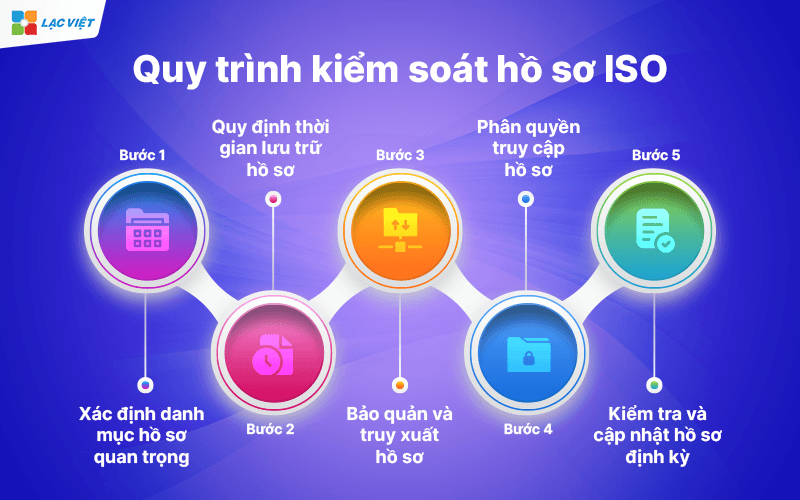
Step 1: Identify the category of vital records: Business needs sorting the records need to control, including:
- Test report quality
- Minutes of staff training
- Contract customer/supplier
- Record internal evaluation
Step 2: Specified storage time record: A number of documents to be stored in 3 – 5 years according to the requirements of ISO 9001. Business needs specified storage time clearly to avoid lost or storage is not necessary.
Step 3: preservation and access to records
- Set up the storage system science, be it management system, electronic records, or storage of paper records by category clear.
- Building access fast, secure when in need can search easily by number, date or storage related content.
Step 4: The right of access to records: A record number have high security (such as customer contracts, financial reports), should limit access to those individuals who have authority.
Step 5: Check for updates profile periodically: perform periodically check to ensure records are accurately updated, not misplaced.
Practical benefits
- Meet the requirements of internal inspection and assessment ISO 9001 certification easily.
- Easy access to data when needed, help save time, improve work performance.
- Enhance the security, control, important information, avoiding the risk of loss or misuse of records.
3. Assessment process internal ISO
Internal assessment is an important part of the process required by ISO 9001 helps business supervision and inspection system improvements quality management. If there is no internal reviews business will be difficult to detect errors or weaknesses in the process, before they cause serious problems.
The common problems when not perform internal reviews:
- Employees do not comply with the process, which leads to errors in the manufacturing – services.
- The issue of quality was only discovered when customers complained, affect corporate reputation.
- Business not timely improvements, which makes the system management becomes less effective obsolete.
The steps taken
Step 1: planning internal audits periodically: Determine the frequency of reviews (monthly, quarterly, or annually). Assignment review team consisting of internal staff or hire outside experts.
Step 2: Determine the evaluation criteria and range test
- Identify the important factors to evaluate, including the production process, documentation, records management, compliance of employees.
- Specify the objective of each assessment, for example: “Check the efficiency of the control system of quality in stitching, packing products.”
Step 3: perform internal assessment: review Team will observe reality, interview personnel and review documentation. Noted the strong and weak points of the system of quality management.
Step 4: report results and suggestions for improvement: synthesis of findings from the evaluation process. Take out the remedies, if there are errors, at the same time proposed improvement solutions to enhance performance.
Practical benefits
- Minimize the risk of customer complaints due to errors, flaws in the process.
- Increase the ability to detect problems before becoming serious incident.
- Ensure the management system, quality is always continuous improvement.
4. ISO process control products/services do not match
A business can't maintain credibility if the products or services of inferior quality to the customer. If there is no mandatory process of ISO 9001 control products/services do not match, the business will meet the problems such as:
- Defective products are still manufactured, leading to a series of complaints from customers.
- Warranty costs, product recalls, high rise, affecting profitability.
- Lose the trust of customers, that business is losing market share to competitors.
For example, a software company discovered errors in important features of the product immediately after launch. Do not have control process defective products, the company must update the software constantly, causing disruption to the user reduces the reliability of the brand.
The steps taken
Step 1: Determine the evaluation criteria product/service does not fit: Businesses need to have clear criteria to identify defective products. For example:
- A mechanical product is defective, if the wrong size deviation exceeds the permitted level.
- A service is considered unsatisfactory if the customer reflect negatively on employee attitude or the processing time too long.
Step 2: Check the error detection: application of the system of quality control at every stage, from raw material input to finished product. Using test methods such as visual inspection, measurement specifications or customer feedback.
Step 3: Determine the project handling products/services do not match
- Repair or adjustment: If the error can be overcome, enterprises need to have the process correct any error promptly.
- Withdrawal val remove: If the products can't fix or not, quality assurance, business need to have a plan withdrawal or securely destroyed.
- Prevent errors repeat: analysis of root causes to adjust the process to avoid errors recur.
Step 4: track results report: Record all cases of products/services do not match, including the cause, the treatment, remedies. Report periodically to assess the level of improvement and find ways to minimize defective products.
Practical benefits
- Reduce complaints from customers, enhance corporate reputation.
- Cost savings warranty fix bugs, optimize profits.
- Improve the satisfaction of customers help businesses maintain a competitive position.
5. Process corrective action preventive
During operation, any business may also encounter errors arising in manufacturing, services or management. If these errors are not handled thoroughly, we can repeat many times, causing waste of resources affect the quality of products and reduces the credibility of the business.
The common problem when there is no corrective action process prevention:
- Error occurs continuously, business takes time and repair costs.
- There is no mechanism analysis, root cause, just fix the temporary that does not solve the problem root.
- Waste raw materials, workers due to production processes or services that have holes.
For example, a company that produces food constantly having problems of moisture in products, biscuits. Instead of just checking defective products and remove, the company decided to carry out the process of overcoming prevention according to ISO 9001 to analyze root causes. They discovered that the humidity is too high comes from the preservation of raw materials in the warehouse is not standardized. After adjustment, storage systems, this problem is completely solved, help reduce the rate of defective products at 20%.
Steps taken:
Step 1: Detect incidents and collected information: When an error occurs, the business should record details of the incident, including: description of the error; the Time of occurrence; The impact of the error to product/service
Step 2: analyze the root cause
- Use method 5 WHY (Question 5 times “why?”) or Ishikawa diagram to identify the reason for the core of the problem.
- Determine whether the error occurs due to human machines, processes or materials.
Step 3: proposed measures to overcome short-term/long-term
- Short-term measures: Fixed immediately to avoid affecting the customer.
- Long-term measure: process Improvement or training staff to error does not repeat.
Step 4: deploy corrective measures, monitoring results
- Business need to have the person responsible for monitoring the process of overcoming check whether the error still occurs or not.
- Record results and adjust if necessary.
Practical benefits
- Prevent errors repeat, save repair costs, reduce material consumption.
- Increase productivity, ensure products/services meet quality standards.
- Improve credibility of the business, help customers more trust.
6. ISO process, to evaluate the satisfaction of the customer
The customer is the core element deciding the existence and development of the business. If the business does not listen to feedback from customers, they may lose market share to rivals. Mandatory process of ISO 9001, this requires the business to have a process to evaluate the satisfaction of the customer to ensure that products/services always meet or exceed expectations.
The common problems when not made satisfaction rating:
- Business't know what customers really want, what lead to provide products/services do not match.
- Not timely detection of problems our customers encountered, increase the number of complaints.
- 't improve timely service, make customers left and select your competition.
For example, a company, ecommerce frequently encountered complain about delayed delivery time, but do not systematically collect feedback, they only discovered the problem when customers cancel orders in bulk. After the deployment process to evaluate the satisfaction, the company can identify problems early to improve the delivery system, helping to increase the percentage of customers who back up to 15%.
The steps taken
Step 1: build your system, collecting feedback from customers
- Periodic surveys via email, phone or website.
- Recorded complaints and feedback from the channel of customer care.
- Live interview customers to understand their expectations.
Step 2: analyze the data to find out the points that need improvement
Synthetic analysis of customer feedback according to criteria such as:
- Quality products
- After-sales service
- Speed of delivery
- Customer experience
Identify the problem repeated many times to priority to improve.
Step 3: Take out the improvement plan based on real feedback
- If customers complained about the delivery time, businesses can consider adjusting logistics processes.
- If the customer is not satisfied with support services, institutions need re-training our team of customer care.
Step 4: Follow re-evaluation after the improvement
- Continue to gather feedback to see the improvement measures are really effective.
- Adjust more if needed to enhance customer experience.
Practical benefits
- Increase the percentage of customers who return to help businesses have a large amount of loyal customers.
- Improve the quality of products/services based on real feedback, avoid losing customers to competitors.
- Increase revenue thanks to the satisfaction of our customers, reducing the cost due to reduced complaints and return of goods.
Deployment 6 mandatory process of ISO 9001 not only help businesses achieve international certification but also bring real value to improve performance, minimize errors, optimize processes, enhance the customer experience. When business document control, internal audits, product handling do not match, perform corrective actions, and measure the customer satisfaction, system quality management will become a powerful tool for sustainable growth.









